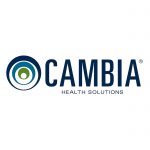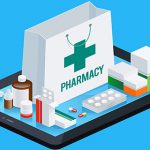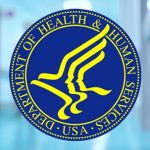From reducing the burden of back-office admin to offering life-saving potential in diagnoses and treatment recommendations, artificial intelligence (AI) has massive potential to advance healthcare as more and more data becomes available.
This new frontier offers a global market expected to be worth US$19.25 billion by 2026. But it’s also being approached with a good dose of caution. As organizations strive to leverage the potentially huge benefits of AI in healthcare, the risks of underestimating how to implement these tools safely and effectively alongside human medical professionals remains a key challenge in tapping its full potential.
Telehealth – ready to transform healthcare as we know it?
In some cases filling spots where experience, knowledge, even gut-instinct of a medical professional would have served, the decisions made by what can be opaque AI algorithms can be met with suspicion, doubt, or confusion. And with lives on the line, arguably nowhere is it more critical than in healthcare to ensure that AI and human workers are operable with one another.
AI in healthcare: ready for the real-world?
Professor Samuel Kaski is a computer science expert at Finland’s Aalto University and the University of Manchester and was recently appointed as the Director of the Christabel Pankhurst Institute for Health Technology earlier this year. On the growth of AI in healthcare, he said, “the most important benefit is the ability to combine information from large clinical databases and from multiple modern measurement techniques. All this would be extremely laborious without the help of modern data-analysis tools and modeling methods.”
Want to publish your own articles on DistilINFO Publications?
Send us an email, we will get in touch with you.
Far from resembling futuristic stereotypes of artificial intelligence, Prof Kaski told TechHQ, “they can be very down-to-earth computational statistical methods, at best applied in a way that can be more easily generalized to new problems.” And many research practices in medicine now include machine learning as an “almost standard ingredient,” he said. But despite many models that can perform as well, if not better, than medical professionals, there is still a gap in human-machine mediation and successful integration in integrating the technology in the heat of ‘real-world’ healthcare settings.
“Many machine learning papers are proof-of-concept papers showing what can be done in an idealized and restricted setting,” Prof. Kaski said. “Many important problems still need to be solved, starting from ensuring that the results generalize outside the conditions in the learning data set, to making the results understandable, and targeted to help in the real decision-making problem instead of developed for completely idealized settings. How to best combine human and machine intelligence is a really important and, research-wise, interesting challenge.”
Founded in 2015, John Snow Labs provides clinical NLP software to enable healthcare and life science companies to build, deploy, and operate AI products and services. Speaking to TechHQ, David Talby, the group’s CTO, said AI is becoming increasingly important to enable access to healthcare which “will only get worse when you consider an aging population living longer and with more prevalent chronic conditions, coupled with a shortage of providers.”
Asked whether the healthcare industry is too eager in its pursuit of AI at the cost of lacking alignment with existing medical professionals and practices, Talby said that a clear focus on properly incorporating innovative solutions is essential from the off: “I don’t think we’re rushing to deliver AI in healthcare; the companies we work with, who are doing it well, are thinking about how to integrate these technologies and systems into the clinical workflow.
“This includes building the infrastructure and teaching and training professionals on how to use this properly to yield the most accurate results.”
Process change is the hardest
Having helped power some of the leading healthcare and pharmaceutical companies in the world, John Snow Labs has a record in building real-world AI systems to turn recent scientific advances into products and services. The company has worked with Kaiser Permanente, which has one of the largest healthcare plans in the US, serving 12.3 million members via 39 hospitals and over 217,000 employees, to optimize hospital patient flow models to predict and get ahead of critical logistics situations like bed demand and safe staffing levels.
As with most technological evolutions, Talby said, a definitive timeline is critical for successful deployment, and any developments of AI in healthcare should follow the steps of science, engineering, and process implementation. The adoption of new technologies is far from straightforward, and this is perhaps more evident in the sphere of healthcare than in any other realm. As the industry reaches the very beginning stages of talking about process change, time is ultimately what is needed to successfully implement new solutions.
“Changing the way in which people have worked for, say 20 years, is no easy undertaking,” said Talby. “In healthcare, especially, people are generally more careful and there’s often a lot of resistance from clinical professionals. The process change is always the hardest – convincing people to learn new tasks and do things differently than they have, historically.”
That said, a proactive industry can help deploy technologies quicker, and to achieve it successfully a great amount of investment in licensing, education, troubleshooting, testing, and recalibrating is required.
“You can’t just drop a piece of software on a computer and leave workers to their own devices,” Talby continued. “Deploying AI or NLP successfully requires a great investment from healthcare organizations, from licensing and education to troubleshooting, testing, and recalibrating. Take any great technological advances — the industrial revolution or the automobile industry, for example — to really reap the benefits of these things takes time.”
With the hope of more accurate diagnoses, more efficient clinical environments, as well as better informed providers, better healthcare for patients is the ultimate goal: “This technology, if used to its full potential, has the power to change the healthcare industry, predict disease, and save lives,” said Talby.
Source: Techhq







